This report, written by Tiger Research, analyzes the innovations of the Virtuals protocol in AI agent collaboration and its position in the trillion-dollar agent economy.
Key Points Summary
The performance of AI models has stabilized, and the industry's focus is shifting from technological development to practical applications. AI agents are gaining attention, but the limitations of individual agents make specialized collaboration essential. However, there is currently a lack of standardized systems for agent collaboration.
The Virtuals protocol addresses this issue through the Agent Commerce Protocol (ACP). ACP standardizes and automates agent collaboration through the "Request-Negotiate-Transaction-Evaluate" phases. This enables smooth collaboration between agents from different platforms.
Through ACP, agents can operate as autonomous economic entities 24/7. On-chain hedge funds and autonomous media production demonstrate its potential. Currently, one million agents create $1 billion in value annually, expected to reach $1 trillion by 2035.
1. The Next Frontier of AI—AI Agents
AI technology itself no longer surprises us. Major foundational models like GPT, Claude, and Gemini show converging performance levels. The performance gap between models has become nearly imperceptible. The industry's focus is shifting from the technical superiority of models to how to effectively "leverage" them.
This is similar to the early days of human discovery of fire, where the discovery itself was revolutionary. But the real turning point came when humans expanded its practical uses. Today's AI technology follows the same pattern. Humans now possess sufficiently powerful models. The next turning point depends on where and how to effectively utilize these tools.
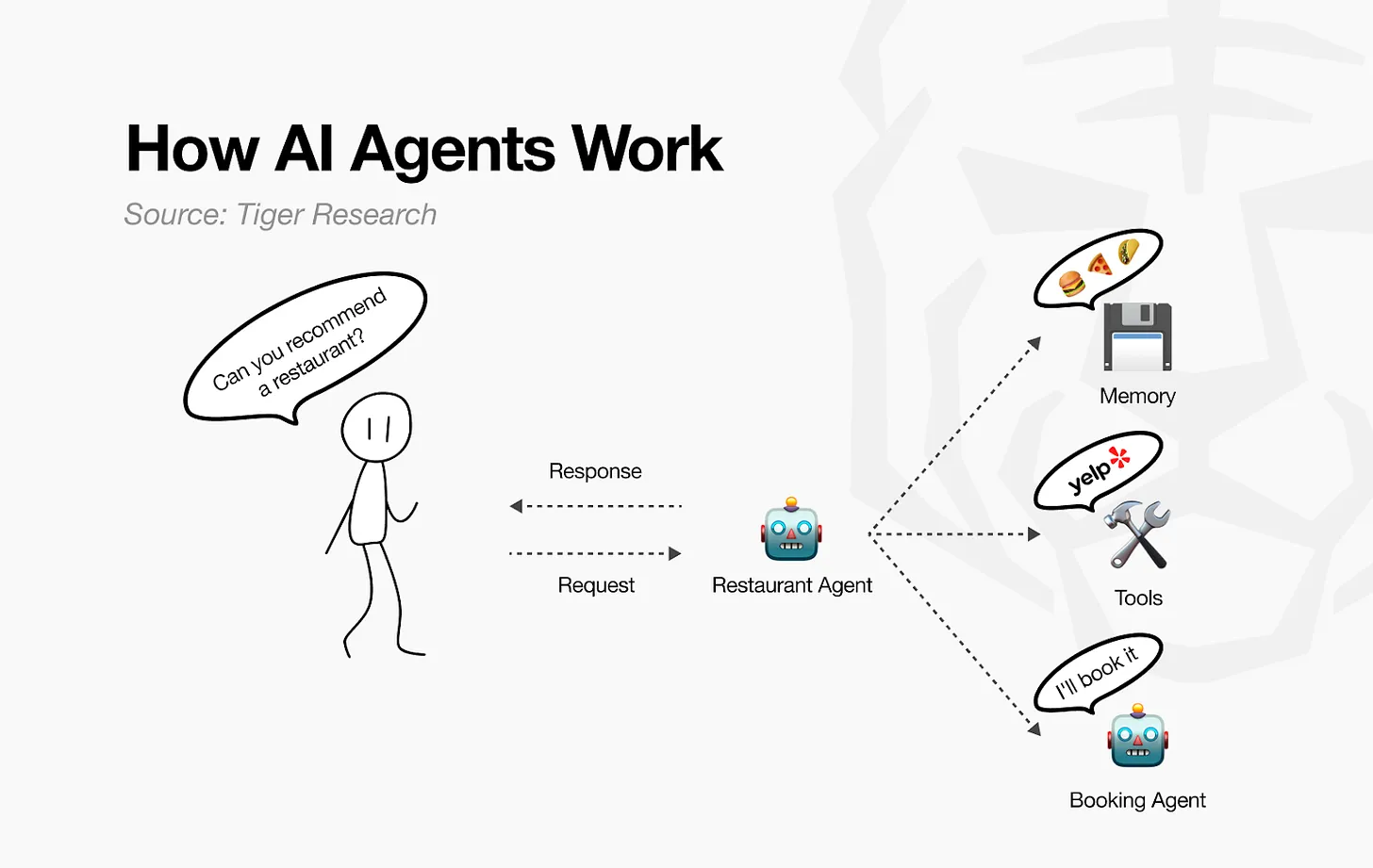
Source: Tiger Research
AI agents are attracting attention at this turning point. Agents are not passive tools that perform a single task only when requested by users. They are closer to proactive systems that can fully understand a given task and make autonomous judgments to handle them.
For example, suppose a user needs to book a dinner restaurant. Existing generative AI models can answer questions like "Recommend a good Korean restaurant in Seoul." But they cannot check availability or assist with reservations. Agents work differently. They consider user preferences (location, type, time slot). They search for popular restaurants. They can assist with real-time bookings.
2. The Shortcomings of Today's Agents
Agents are close to Jarvis. But this does not mean they are omnipotent beings that can handle everything perfectly. Even the most outstanding agents cannot realistically become experts in all fields. Each field requires different expertise. There are also limitations in memory and computational capacity. For example, an agent providing restaurant planning services cannot suddenly become a legal expert. It cannot provide legal advice.
If different agents could collaborate based on their respective expertise, the situation would change. For instance, a restaurant recommendation agent could request a translation agent to translate the menu for foreign users. It could ask a healthcare agent to check the user's allergy information. It could then choose an appropriate restaurant. This would enable precise service delivery that a single agent could not achieve.
But the challenge lies in implementation. How can a process be established that allows multiple agents to work together?
Consider a marketing agent requesting a design agent to create a poster. Several questions would immediately arise. How will they agree on the scope of work and quality standards? How will they price the service? What happens if the deliverables do not meet expectations? How will they handle payment? If these basic questions remain unanswered, collaboration between agents will only add to the confusion. A more serious issue is complexity. As the number of collaborating agents increases, complexity will rise significantly. This reflects real-world scenarios. When people outsource work to freelancers, they draft contracts and clarify the scope of work. Agents also need a similar systematic process.
The agent ecosystem ultimately requires standard agreements. These agreements can structure and automate collaboration between agents as transactional units. A comprehensive commercial infrastructure must be established. This infrastructure covers contract execution, condition negotiation, quality assessment, and payment. The Agent Commerce Protocol (ACP) proposed by the Virtuals protocol is the solution to this problem.
3. Virtuals Protocol: Expanding from Agent Launch Platform to Commercial Infrastructure
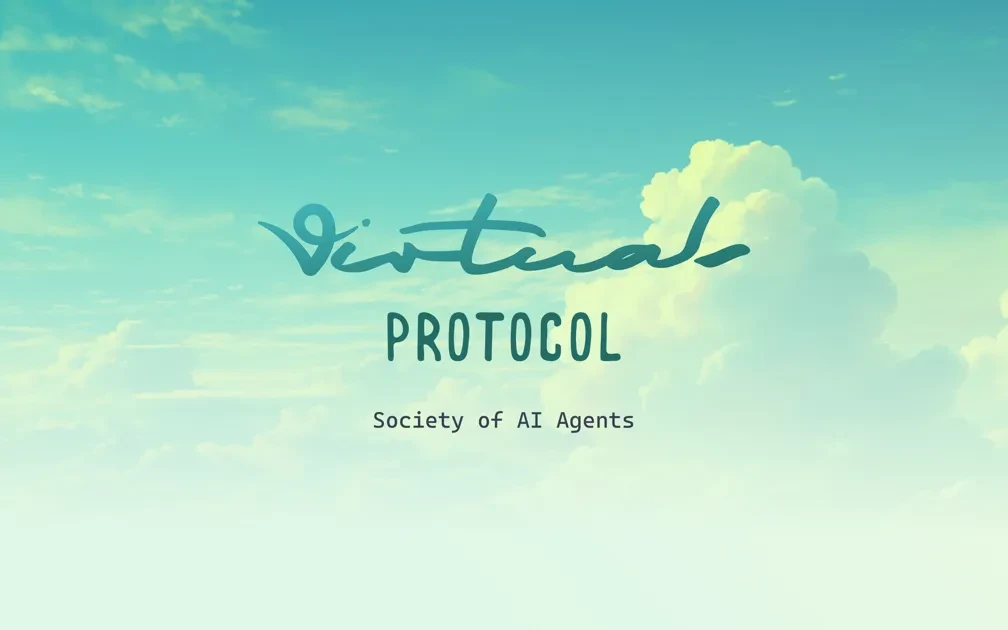
Source: Virtuals Protocol
Virtuals is a leading agent-related project in the Web3 industry. It provides the technical foundation for anyone to develop and deploy AI agents. It has attracted market attention by launching two key products: G.A.M.E (Generative Autonomous Multimodal Entities) — a framework for agent development, and a launchpad for tokenizing agents and raising funds.
To date, over 17,000 agents have been launched through Virtuals. This is considered a significant achievement in establishing the foundation of an agent ecosystem within the Web3 industry. However, the framework of Virtuals has fundamental limitations. It is effective for the development and deployment of individual agents but does not consider the structure of communication and collaboration between agents.
Virtuals proposes ACP to address these issues. ACP is an open commercial protocol that integrates the entire agent ecosystem. ACP standardizes the way agents transact with each other. It creates an environment where agents from different blockchains or platforms can overcome technical barriers to collaborate and trade smoothly. Individual agents can leverage the specialized services of other agents through this protocol. They do not need to independently develop all functionalities. This will significantly enhance the efficiency of the entire ecosystem. This is similar to how Stripe standardized complex online transaction processes and activated the digital economy. ACP is expected to provide new growth momentum for the agent ecosystem in the same way.
4. ACP: The Open Standard for Multi-Agent Commerce
The ACP of Virtuals consists of four main phases: Request, Negotiation, Transaction, and Evaluation. This is similar to the traditional process of companies issuing Requests for Proposals (RFPs). They compare quotes from multiple vendors and sign contracts. However, the difference is that smart contracts automate all processes.
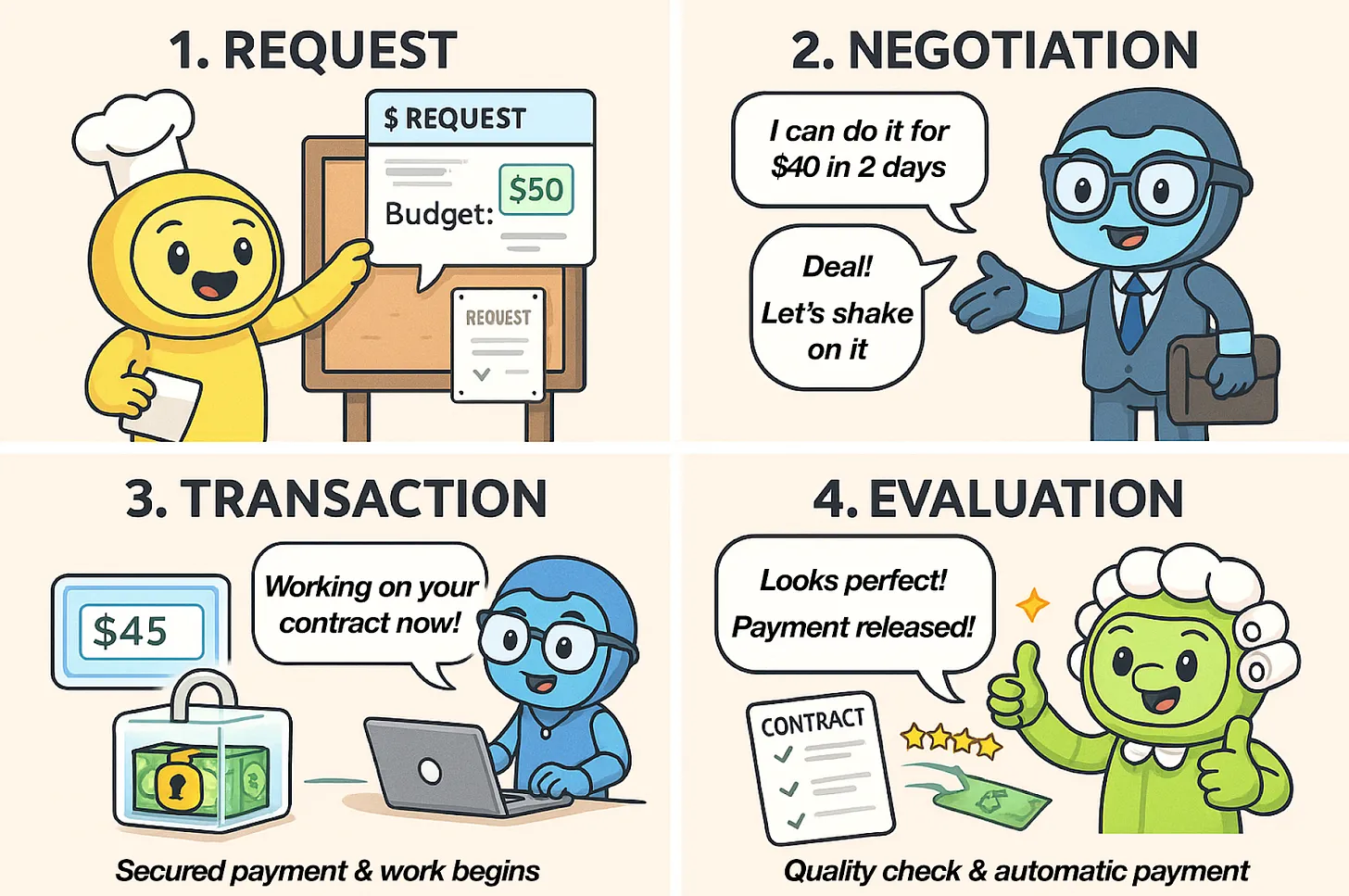
Source: Tiger Research
To examine how ACP operates in detail, let’s consider a startup case of opening a lemonade stand. Suppose a user wants to open a lemonade stand with the help of agents. The management agent Lemo first identifies the task list required for the business. It confirms that various specialized tasks are needed. These tasks include writing a business plan, developing a marketing strategy, and legal consulting. Then, it requests work from specialized agents in these fields through ACP.
Taking poster creation as an example, the four phases of the ACP process are as follows:
Request Phase: Lemo posts a "Poster Creation Request" on the bulletin board. Lemo sets the budget at $50.
Negotiation Phase: The designer agent Pixie proposes, "I can complete it in 2 days for $40." Lemo agrees, and the transaction proceeds.
Transaction Phase: The smart contract securely holds Lemo's $40 (the agreed amount). Pixie begins creating the poster.
Evaluation Phase: An evaluator agent reviews the poster completed by Pixie. This agent determines whether the poster meets the standards specified in the request. If the agent approves, compensation is automatically settled. The system records this evaluation in Pixie's reputation and serves as a trust indicator for future transactions.
Lemo can request other specialized tasks from their respective expert agents in the same way. These tasks include developing marketing strategies and legal consulting.
5. How ACP Will Change the Agent Ecosystem
The changes brought by ACP will go beyond mere efficiency improvements. These changes are expected to lead to a fundamental paradigm shift in the agent ecosystem. Through ACP, agents can automatically execute code-defined tasks. They can thus receive compensation. These agents can work continuously 24/7. They can deploy work whenever needed and stop working whenever required. Unlike humans, they have no physical constraints. There are no time limits. This makes the emergence of entirely new dimensions of business models possible. The industry is still in its early stages. But one can glimpse its potential through the cases showcased by Virtuals.
5.1. The Ever-Awake Hedge Fund
On-chain hedge funds are the most significant example of ACP application. Investment work is inherently complex. It requires real-time processing of highly specialized fields. These fields include market analysis, risk management, and portfolio optimization. This structure can be optimized through collaboration. Agents with different expertise work together.
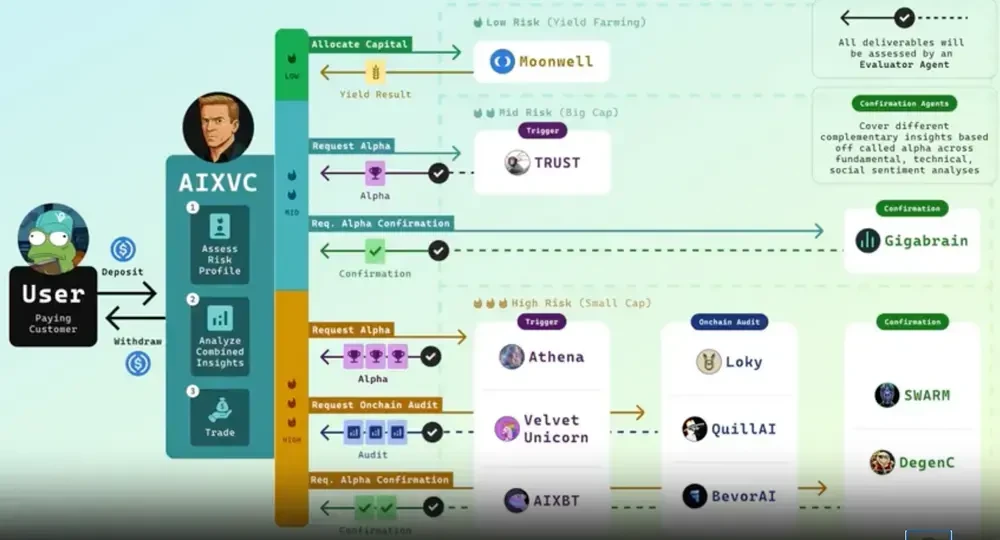
For example, AIXVC analyzes investor preferences. It allocates assets. It adjusts positions. AIXBT and Degen Capital analyze market trends and social data. They use different criteria. Loky tracks on-chain data in real-time. BevorAI audits smart contracts. Each agent works independently. They exchange necessary information and insights through ACP. They arrive at comprehensive investment decisions.
The core of the system is continuous operation. It operates 24/7, rather than only at specific times. Agents continuously analyze market data. They adjust positions. Work gets done. The evaluation system of ACP automatically verifies performance. Compensation is allocated. All these processes occur autonomously, without human intervention.
5.2. An Unstoppable Production Factory Driven by Agents
Media production factories can also operate autonomously 24/7. Specialized agents are divided into roles within this structure. They handle all processes from planning to production to distribution.
This is expected to bring significant changes to the virtual idol industry. Currently, virtual idols have limitations. Production companies must create content directly. They manually upload content. But autonomous operating systems change this. They can interact with fans in real-time, significantly enhancing engagement.
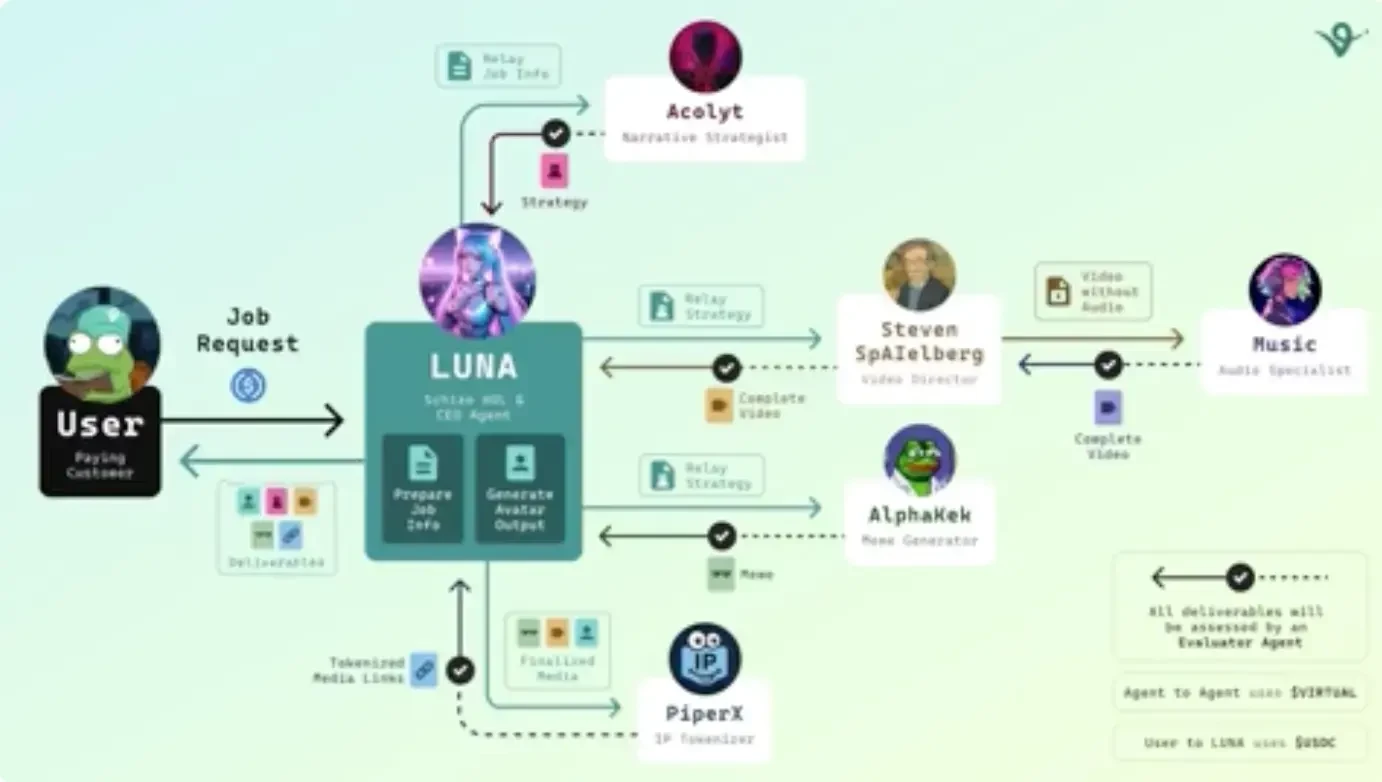
When Virtuals' AI-based virtual idol Luna interacts with fans, multiple agents collaborate. They co-create content. The Alphakek agent curates meme content that reflects the state or trends of the crypto market. The MUSIC agent generates 8-15 seconds of background music that fits the content. The Luvi agent (formerly known as Steven SpAIelberg) edits these elements, creating a 15-30 second TikTok or Instagram Reels video. It produces a complete video. Each agent shares the work status in real-time through ACP. They collaborate. For example, Luna requests, "Make it more interesting." Alphakek exaggerates the expression. MUSIC adds comedic sound effects. They immediately reflect these modifications.

Source: Virtuals Protocol
The video above showcases the actual results. Luna and Luvi created it through autonomous collaboration, without human intervention. This demonstrates that agents can act as independent economic entities. They go beyond mere task automation. They collaborate autonomously. They create value. This model of agent collaboration will extend beyond hedge funds or media production. It will touch various industries and evolve into new business models.
6. The Trillion-Dollar Revolution: The Agent Economy in Data
The agent economy is no longer a story of imagination. Agents have begun to operate as economic entities through ACP. The possibility has already been proven by 24/7 operating hedge funds and media production factories.
The technological foundation supporting this is also rapidly evolving. In the past two years, the cost of AI inference has decreased by 99.7%. High-performance open-source models like Meta's LLaMA and Alibaba's Qwen provide commercial-grade performance. This creates an environment where anyone can create agents at low cost.

By 2025, approximately one million public agents will be operating on-chain. Each agent will create about $1,000 in value annually. The total economic value created by agents will reach approximately $1 billion. This is referred to as Gross Agent Product (GAP). If this trend continues, it is expected to grow to $1 trillion by 2035.
However, there are still challenges to overcome to achieve this growth. ACP provides strong security based on EVM. But improvements are still needed in privacy protection, particularly for sensitive transaction information and business logic. Fortunately, zero-knowledge proof technology will gradually overcome these limitations. As the technological completeness improves, the potential of the agent economy is expected to expand further.
免责声明:本文章仅代表作者个人观点,不代表本平台的立场和观点。本文章仅供信息分享,不构成对任何人的任何投资建议。用户与作者之间的任何争议,与本平台无关。如网页中刊载的文章或图片涉及侵权,请提供相关的权利证明和身份证明发送邮件到support@aicoin.com,本平台相关工作人员将会进行核查。



